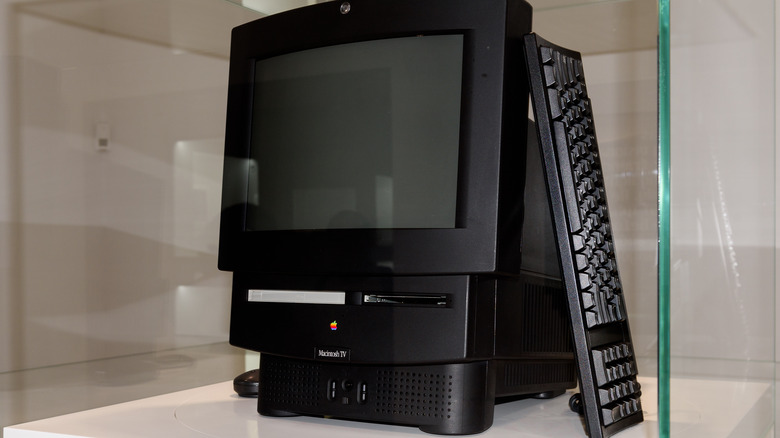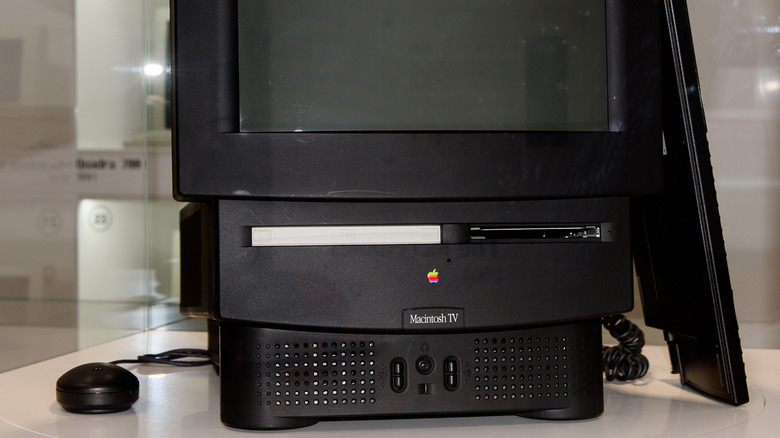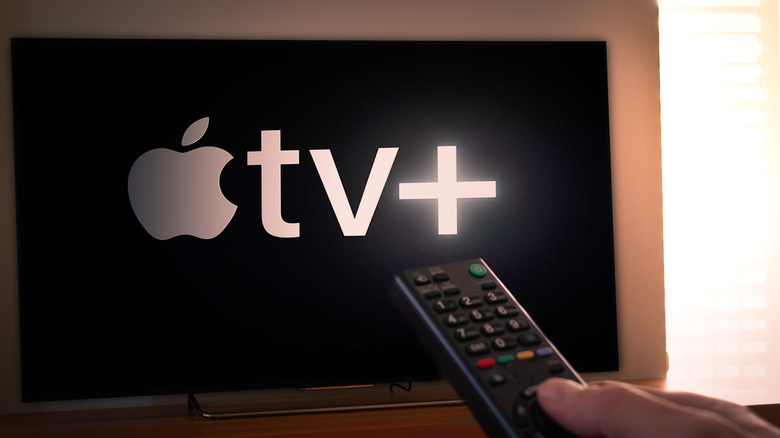Before Apple TV, There Was This Bizarre Apple Product
Apple is arguably the most successful company in history, having created some of the most popular products of all time. Its run of hits started with the launch of the famous Bondi Blue iMac back in 1998 and continued when Apple launched the iPod a few years later in 2001. Much of its recent success can be attributed to the iPhone, although the iPad and Apple Watch are also the most popular products in their respective categories. However, its foundational success dates back to the launch of the Apple 2 in 1977, which came in a number of different versions over the years while it racked up around 6 million sales (via CNBC).
For all of its successes, however, Apple has had some very public missteps along the way. Of course, it was on the verge of bankruptcy at one point before Steve Jobs famously returned to the company in 1997 to save it more than a decade after the board fired him in 1985. Jobs oversaw one or two of those blunders, including the infamous iPhone 4 launch which was marred by Antennagate, one of the biggest disasters in the company's history. An older and lesser-known hiccup — but one fascinating nonetheless — was the failed launch of the Apple Macintosh TV, which was a precursor to Apple's later, more successful, TV efforts.
The Apple Macintosh TV
The Apple Macintosh TV went on sale in 1993 with a hefty price tag of $2,099 — that's the equivalent of more than $4,200 in 2022. It was effectively a variant of the Macintosh LC 520 that immediately captivated the Mac community with its slick black case and built-in TV tuner card. The model had a port on the rear of the device that allowed users to plug their TV antenna or cable service directly into it. The Mac TV included one of Apple's first television remotes and allowed users to change channels, control volume, and perform the other typical functions you'd expect at the time. In many ways, it was ahead of its time, but like many good ideas that go by the wayside, it wasn't especially well executed.
Although the Macintosh TV had a dazzling 14-inch Sony-sourced Trinitron monitor and was powered by a state-of-the-art 32 MHz Motorola 68030 CPU, it was actually slower than the 25 MHz Macintosh LC 520 because it used a slow 16 MHz data bus and had an 8 MB RAM ceiling. By adding a TV tuner card, the model lost its only upgrade port, limiting its versatility while its graphics performance was also stunted at just 8-bits (although the TV tuner was a full 16-bit system). While it offered an enticing glimpse at the future of multimedia consumption on computers in the living room, the company ended up shipping only 10,000 units and the model was pulled from sale just six months after its launch, according to Ars Technica.
Apple TV and Apple TV+ deliver on the dream
Of course, today Apple's TV ambitions are on much firmer ground when compared with the Macintosh TV. The company launched its first Apple TV set-top-box back in September 2006. While it wasn't a Mac computer, it ran a variant of the iPhone's operating system that Apple now calls tvOS, before also later adopting Apple's custom Arm-based iPhone SoCs. While never a breakout hit for the company in the same way that the Mac or iPhone was, the Apple TV got users increasingly accustomed to the idea of TV as an app. It also fulfilled the Macintosh TV's dream of bringing TV to the living room.
The Apple TV also eventually helped lay the foundation of the Apple TV+ service, which is Apple's homegrown original content platform for episodic TV shows, films, and documentaries. It's hard to imagine anyone at Apple fostering ambitions of creating its original content at the time the Macintosh TV was born, but it seems Apple has always been destined to be involved in the space in some way. After all, when founder Steve Jobs returned to the company in 1997, his own film studio, Pixar, was enjoying the afterglow of its smash-hit movie "Toy Story," which had been released to critical acclaim and commercial success in 1995. Jobs ended up selling Pixar to Disney in 2006 in a deal worth $7 billion (via CNBC). It's fitting that the Disney app now also finds a place on the Apple TV.


